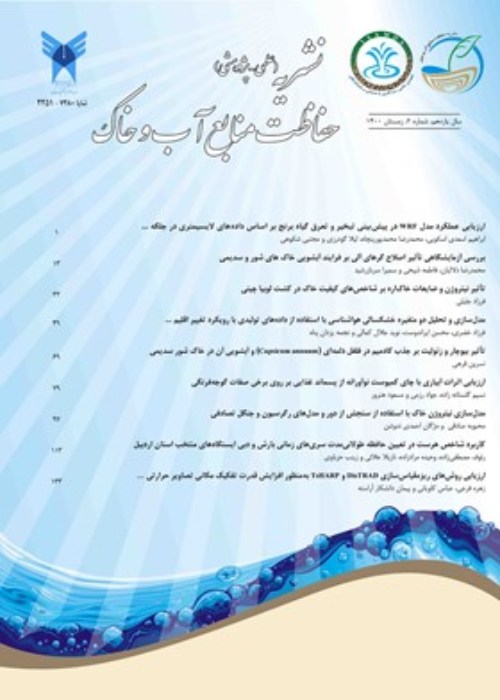Modeling Soil Organic Matter Distribution Using Remote Sensing and Random Forest Model and Kriging in Lenjan County
Soil is one of the most important natural resources that provides more than 97% of human food needs. Soil organic matter (SOM) is an important soil quality factor that greatly affects soil’s physical, chemical, and biological properties. Modeling and mapping of soil properties are critical in many environmental, climatic, ecological, and hydrological applications. The main objective of this study is to model the distribution of soil organic matter and organic carbon using satellite images and random forest and kriging models in Lenjan County.
In this study, digital maps of four main soil parameters including soil organic carbon, soil organic matter, electrical conductivity, and pH are prepared using random forest and Kriging methods in Lenjan County. Based on homogeneous land units, a total of 110 points in the study area are determined, and in these points, samples are taken from a depth of 0 to 30 cm of soil surface. Sampling is done in July 2021 and Sentinel-2 satellite images are acquired from the same month because better information is available this month due to fewer clouds and increased direct reflection from the soil surface. In addition, 16 environmental variables affecting the distribution of soil parameters are used. Various auxiliary variables such as NDVI, NDWI, DEM, and Slope are used for prediction, which are all directly or indirectly extracted from satellite images.
The maps obtained by the random forest method showed more accuracy than the kriging method. The zoning map prepared using the random forest method displays much more details than the map prepared by kriging method. The output of the random forest model with the combination of different auxiliary variables showed values equal to 0.312, 0.54, 0.73 and 0.16 of the modeling error for soil organic carbon, organic matter, electrical conductivity and pH, respectively. In the study area, the maximum values of soil organic carbon and organic matter were observed in urban areas and the highest values of electrical conductivity and pH were observed in agricultural lands. The most important variables affecting the spatial distribution of organic carbon and soil organic matter are clay, slope and silt. While in modeling electrical conductivity, silt BI and Aspect and in modeling pH, MNDWI, NDWI and DEM variables are recorded as more important than other variables.
In general, this study demonstrates that land use regression models based on random forest method can help mapping soil parameters faster and more efficiently. There is a strong need for efficient and accurate methods, including land use regression, for continuous monitoring of changes in soil quality in different landscapes. Land use regression contributes developing advanced maps of soil quality parameters using cost-effective and accessible spatial information.
- حق عضویت دریافتی صرف حمایت از نشریات عضو و نگهداری، تکمیل و توسعه مگیران میشود.
- پرداخت حق اشتراک و دانلود مقالات اجازه بازنشر آن در سایر رسانههای چاپی و دیجیتال را به کاربر نمیدهد.


